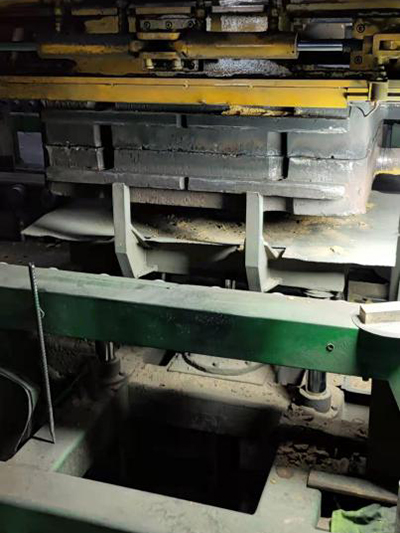Parting Sand in Foundry An Essential Element of Metal Casting
In the world of metal casting, every detail counts, from the design of the mold to the types of materials used. Among the many elements that contribute to a successful casting operation, parting sand holds a critical role. This special type of sand is employed in the molding process, serving as a separating agent between the mold halves and facilitating the release of the cast product once the metal has cooled.
Parting Sand in Foundry An Essential Element of Metal Casting
One of the essential characteristics of parting sand is its ability to withstand high temperatures. During the casting process, molds are typically exposed to intense heat as molten metal is poured into them. If the parting sand cannot withstand these conditions, it may break down and contaminate the casting or create defects in the final product. Therefore, high-quality parting sand is vital for achieving the desired finish and structural integrity in metal castings.
parting sand in foundry

The application of parting sand varies depending on the type of metal being cast and the complexity of the mold. In most foundries, parting sand is either sprinkled onto the surface of the mold or mixed with the standard molding sand to enhance its properties. A proper application technique is crucial; too much parting sand can lead to a rough surface finish, while too little may cause sticking issues.
In addition to its functional advantages, parting sand also plays a role in the overall efficiency of the foundry operation. By ensuring that the molds can be reused without extensive cleaning, it helps reduce downtime and improves productivity. Foundries often aim to refine their parting sand application process, experimenting with new formulations and techniques. This continuous improvement is essential in meeting the demands of modern manufacturing, where precision and quality are paramount.
Furthermore, the environmental impact of foundry operations has become an increasingly pressing issue. The use of traditional parting sands, often reliant on synthetic additives or non-renewable resources, raises concerns about sustainability. As a response, the industry is researching and adopting more eco-friendly alternatives. These innovations not only aim to protect the environment but also enhance the foundry's operational efficiencies.
In summary, parting sand is a vital component of the metal casting process, ensuring that castings can be produced consistently and efficiently without compromising quality. Its role is particularly crucial in high-temperature environments, where durability and proper application are key. As foundries continue to innovate and adapt to both technological advancements and environmental responsibilities, the significance of parting sand in the industry will undoubtedly persist. The journey towards more sustainable practices will further shape the future of metal casting, and parting sand will remain at the forefront of this evolution. As we forge ahead, understanding and optimizing the use of parting sand will be essential for success in the foundry sector.
Post time:অক্টো. . 07, 2024 09:01
Next:bauxite sand
